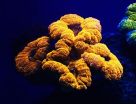(Press-News.org) DALLAS, June 24, 2015 -- Nearly half of Hispanic adults were unaware they have high cholesterol, and less than a third receive any kind of cholesterol treatment, in a new study in Journal of the American Heart Association.
Hispanics are one of the fastest growing ethnic groups in America, with 52 million among the U.S. population, yet their awareness and management of high cholesterol lags behind other ethnic groups. Educating Hispanics/Latinos about the importance of maintaining healthy cholesterol levels could have a significant public health impact on reducing the burden of heart disease in America.
Researchers reviewed data from 16,415 Hispanics, between 18 to 75 years of age, who participated in the Hispanic Community Health Study/Study of Latinos. They found:
49.3 percent of Hispanics were not aware that they had high cholesterol levels. Of those who were aware, only 29.5 percent received treatment.
High cholesterol was more common among men than women, 44 percent versus 40.5 percent. However, men had lower rates of cholesterol treatment compared with women, 28.1 percent versus 30.6 percent.
40 percent of participants were obese, 25 percent had high blood pressure and 17 percent had diabetes, all risk factors for heart disease and stroke. Participants with these conditions were more likely to be aware that they had high cholesterol.
Younger adults, women, the uninsured, those with lower income, and more recent immigrants were less likely to have their high cholesterol controlled.
Hispanics born in the United States were more likely to be unaware of their high cholesterol compared with foreign-born Hispanics, however, longer U.S. residency was associated with cholesterol awareness, treatment and control.
"Many Hispanics have high cholesterol, approximately 45 percent, probably due to a mix of genes and diet," said Carlos J. Rodriguez, M.D., M.P.H., study lead author and an associate professor of medicine and epidemiology at Wake Forest School of Medicine in Winston Salem, North Carolina.
"What's more surprising is the lack of awareness, treatment and control. That needs to change since awareness is the first step in prevention," he said.
In this study, treatment was effective in 64 percent of those treated, indicating that awareness and management can work in lowering cholesterol levels.
Addressing these gaps is critical to reducing Hispanic/Latinos' risks for high cholesterol, heart disease and heart attack and improving overall public health.
"Lack of awareness is a problem with roots at different levels in Hispanics: access to care and patient/provider difficulties such as language barriers or cultural insensitivity may further contribute to these gaps," Carlos said.
The American Heart Association's 2020 Impact goal is to improve cardiovascular health of all Americans by 20 percent while reducing deaths from cardiovascular diseases and stroke by 20 percent. Improving cholesterol levels among all Americans is a critical component to reaching the goal.
"Heart disease remains an equal opportunity threat to the health of everyone; no person is immune. If we are to continue our record of success in reducing the burden of heart disease, we will need to broaden our target for risk factor reduction," said American Heart Association spokesperson Clyde W. Yancy, M.D., chief of cardiology at Northwestern University's Feinberg School of Medicine and a former AHA president.
"We cannot rest on our triumphs as nearly 50 percent of those Latino Americans with high cholesterol are unaware of the presence of this risk factor for heart disease and thus remain exposed to an increased risk for heart attack and stroke. We should consider this as an unacceptable burden of risk and consider public health policies, community awareness and a redoubled focus on prevention in all communities at risk."
INFORMATION:
Yancy was not involved in the study. Co-authors are Jianwen Cai, Ph.D.; Katrina Swett, M.D.; Hector Gonzalez, Ph.D.; Gregory A. Talavera, M.D., M.P.H.; Lisa Wruck, Ph.D.; Sylvia Wassertheil-Smoller, Ph.D.; Donald Lloyd-Jones, M.D., Sc.M.; Robert Kaplan, Ph.D. and Martha Daviglus, M.D., Ph.D.
Additional Resources:
A graph of high cholesterol in Hispanics and photos of cholesterol testing will be on the right column of the release link http://newsroom.heart.org/news/nearly-half-of-hispanics-unaware-they-have-high-cholesterol;-less-than-a-third-treated?preview=b2e6620c70ff9a2043f90ddef617dba1
Follow AHA/ASA news on Twitter @HeartNews.
For updates and new science from JAHA, follow @JAHA_AHA.
Statements and conclusions of study authors published in American Heart Association scientific journals are solely those of the study authors and do not necessarily reflect the association's policy or position. The association makes no representation or guarantee as to their accuracy or reliability. The association receives funding primarily from individuals; foundations and corporations (including pharmaceutical, device manufacturers and other companies) also make donations and fund specific association programs and events. The association has strict policies to prevent these relationships from influencing the science content. Revenues from pharmaceutical and device corporations are available at http://www.heart.org/corporatefunding.
COLUMBIA, Mo. - When older adults transfer between nursing homes and hospitals, inefficient and unclear communication between the organizations can hinder patient care. Now, a team of MU researchers is working to improve patients' health outcomes by increasing efficient, secure communication between nursing homes and hospitals using an electronic communication system called a health information exchange (HIE).
"The exchange of accurate, complete and timely information between hospitals and nursing homes can be complicated when older adults transfer from one place to another," ...
Putnam Valley, N.Y. (June 24, 2015) - Cell transplantation researchers have successfully used bone marrow-derived mesenchymal stromal cells (MSCs) to treat a variety of diseases and conditions. Now, using injections of MSCs, a research team in Brazil has successfully treated laboratory rats modeled with severe burns. They found that the MSCs accelerated healing, enhanced local blood supply, affected the immune system in a positive way, secreted beneficial growth factors with anti-inflammatory properties, and ultimately provided higher survival rates than in control animals ...
Urinary tract and sexually transmitted infections in women are misdiagnosed by emergency departments nearly half the time, according to a paper in the Journal of Clinical Microbiology, a publication of the American Society for Microbiology. These misdiagnoses result in overuse of antibiotics, and increased antibiotic resistance, according to Michelle Hecker, MD, an assistant professor in the Department of Medicine, Division of Infectious Diseases, MetroHealth Medical Center, Case Western Reserve University, Cleveland, and her collaborators.
"Less than half the women ...
Astronomers using NASA's Hubble Space Telescope have discovered an immense cloud of hydrogen dubbed "The Behemoth" bleeding from a planet orbiting a nearby star. The enormous, comet-like feature is about 50 times the size of the parent star. The hydrogen is evaporating from a warm, Neptune-sized planet, due to extreme radiation from the star.
This phenomenon has never been seen around an exoplanet so small. It may offer clues to how other planets with hydrogen-enveloped atmospheres could have their outer layers evaporated by their parent star, leaving behind solid, rocky ...
Cystic fibrosis is more deadly for Hispanic than non-Hispanic patients, a disparity that is not explained by differences in their access to health care, according to a new study from the Stanford University School of Medicine.
The study, published online June 18 in Chest, tracked more than 1,700 California residents with cystic fibrosis. Between 1991 and 2010, Hispanic CF patients were almost three times as likely to die as non-Hispanic CF patients, the study found. The gap in survival existed in spite of the fact that both groups visited CF specialty clinics equally ...
Glowing corals that display a surprising array of colours have been discovered in the deep water reefs of the Red Sea by scientists from the University of Southampton, UK, Tel Aviv University and the Interuniversity Institute for Marine Sciences (IUI), Israel, together with an international team of researchers.
The researchers, whose findings have been published online today in research journal PLOS ONE, hope that some of the coral pigments could be developed into new imaging tools for medical applications.
The team studied corals at depths of more than 50 metres and ...
Vitamin B12 tweaks how genes behave in the facial bacteria of some people who normally enjoy clear skin. The activity changes of the facial bacteria promote inflammation and lead to pimples.
By shedding light on one mechanism behind B12's role in acne, the UCLA finding may identify drug targets that lead to new treatments for acne.
Huiying Li, an assistant professor of molecular and medical pharmacology at the David Geffen School of Medicine at UCLA, and Dr. Noah Craft, a dermatologist at LA BioMed at Harbor-UCLA Medical Center, are available for interviews.
Science ...
On the hunt for better cancer screening tests, Johns Hopkins scientists led a proof of principle study that successfully identified tumor DNA shed into the blood and saliva of 93 patients with head and neck cancer. A report on the findings is published in the June 24 issue of Science Translational Medicine.
"We have shown that tumor DNA in the blood or saliva can successfully be measured for these cancers," says Nishant Agrawal, M.D., associate professor of otolaryngology -- head and neck surgery -- and of oncology at the Johns Hopkins University School of Medicine. "In ...
Various diagnostic imaging techniques are currently used for clinical imaging/disease diagnosis. The accuracy of diagnosis is mainly based on the type of energy used (such as X-ray, sound waves, photons and positrons) to derive the visual information, as well as the degree of spatial resolution (mesoscopic or microscopic) and the level of information that can be obtained (physiological, anatomical or molecular). Based on potential health hazards imposed by type of energy used, clinical imaging modalities can be broadly categorized as ionizing and non-ionizing modalities. ...
From AGU's blogs: Landslide-induced sediment production after the Sabah earthquake in Malaysia
The Mw=6.0 5 June 2015 Sabah earthquake in Malaysia, which killed 18 people in rockfalls on Mount Kinabalu, generated landslides that have released large volumes of sediment. The heavy tropical rainfall in Sabah means that this sediment is now starting to enter the river systems in the form of mudflows and sediment-rich flash floods. Dave Petley explores the aftermath of the Sabah earthquake in a new post on The Landslide Blog.
From Eos.org: Improving predictions of Arctic ...

